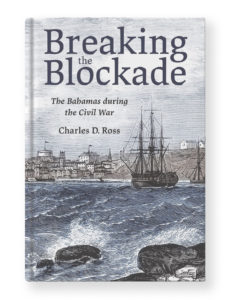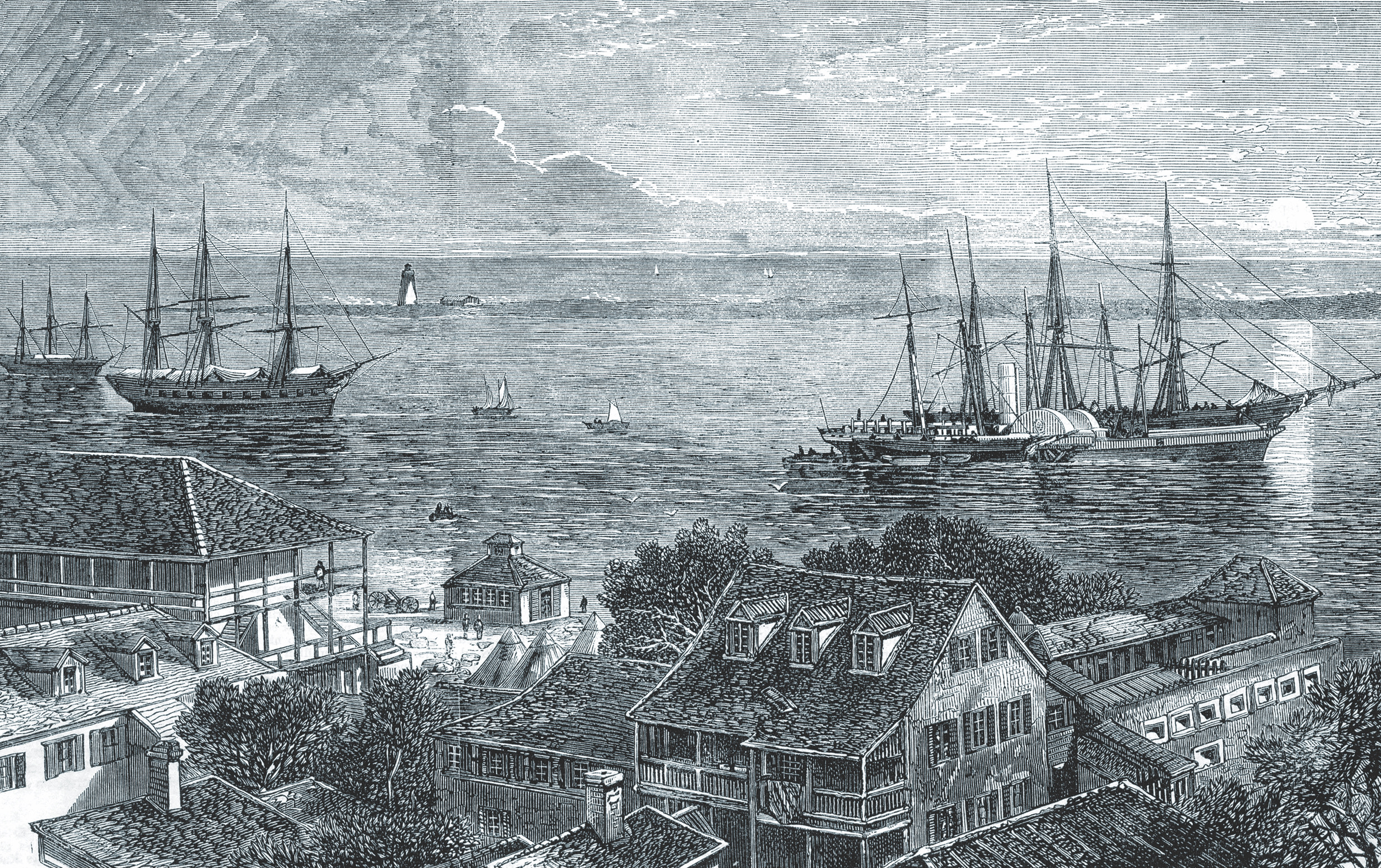Readers holding the moonlight-and-magnolia vision of blockade running during the Civil War as the patriotic actions of intrepid sea dogs selflessly smuggling critical war materials into Southern ports had best read Charles D. Ross’ deeply researched and energetically written monograph to get the story straight. During its heyday, blockade running was a systematic and, for many, a lucrative operation run by a cartel of industrious merchant princes primarily operating out of the port of Nassau on the island of New Providence in the Bahama Islands chain. While many hoped for a Confederate victory, the lure of copious amounts of money made what came to be called the “Great Carnival” the lifeblood of island life during wartime.

The Bahamas During the Civil War
By Charles D. Ross
University Press of Mississippi, 2021, $30
Nassau became the optimal reshipment point for goods coming out of England to be transferred to swift, shallow draft vessels for the final run into Southern ports. It was closer to the Confederate mainland than other island ports and had a large and experienced mercantile class supervised by savvy business entrepreneur George Trenholm and led by commission merchant Henry Adderley. Early in the war, they saw the potential for enormous profits by selling cotton, tobacco, turpentine, and in exchange for British-made war materials, household goods, and luxuries for those who could afford them.
Watching this burgeoning operation evolve was Samuel Whiting, U.S. consul in Nassau. In a September 1861 letter to Secretary of State William Seward, Whiting predicts what was to come. “I am convinced that the rebels and their sympathizers have determined to make Nassau a depot from which supplies may be reshipped to the insurgent states.” Powerless to intercede because the Bahamas were British territory, Whiting and other Union officials sought, usually in vain, to get British officials to stop the trafficking in war material under the maritime doctrine of continuous voyage. The Nassau merchants, experienced with working with Nassau’s large population of “wreckers,” (bands of salvage hunters who pounced on the many ships wrecked in Bahamian waters and selling the goods retrieved) proved adept at evading legal constraints by using false bills of lading and changing nation-of-origin registrations on ships involved blockade running activities.
Ross introduces a large cast of characters that occasionally threatens to overwhelm the narrative, especially in early chapters. A helpful list of dramatic personae provides some clarity as to who’s who, what they did, and where they resided. Also, a picturesque chapter devoted to how a traveler arriving in Nassau in 1861 might find the city would make any travel agent proud. The increased port activity during the war gave rise to the city’s most prominent landmark, the posh Royal Victoria Hotel. It became the center of Nassau’s social scene but, as Ross points out, “Even with the addition of this grand structure, there will not be nearly enough housing for all the people swarming the city.”
But once the war was over, Nassau quickly reverted to a sleepy, destitute outpost of the British Empire. Mother Nature provided the coup de grace on September 30, 1866, when a hurricane almost destroyed the city. “When it was over,” Ross observes, “many thought it was God’s retribution for the sins of the ‘Great Carnival.’”





